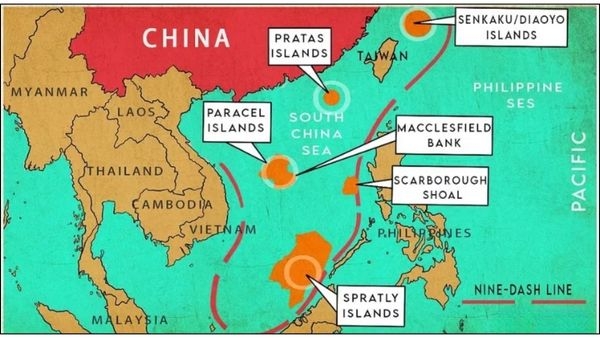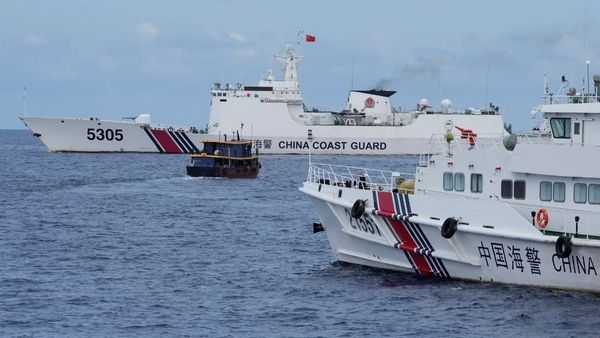Red Dragon’s Expanding Footprint in South China Sea
14 Aug 2025 13:56:58

With tensions rising in the South China Sea due to China’s assertive claims and militarisation, the region’s strategic landscape is becoming more complex and unpredictable.
China’s approach combines historical claims, military build-up, economic strategies, and diplomatic manoeuvres to tighten control over this strategically important maritime zone.
Central to Beijing’s stance is the “Nine-Dash Line”, overlapping with claims of several Southeast Asian nations, creating ongoing disputes and territorial friction.

To strengthen its position, China has built artificial islands, stationed military forces, and extended authority over disputed areas, aiming to secure key shipping lanes.
These moves allow access to natural resources while expanding influence beyond China’s coastline, projecting power across the Indo-Pacific and challenging established regional balances.
Beijing also uses legal arguments, diplomacy, and economic pressure to reinforce its claims while avoiding open war, especially with neighbours and the United States.
China’s actions reflect a broader ambition to undermine U.S. dominance, gain strategic advantage, and reshape Indo-Pacific geopolitics, sparking concerns about maritime freedom and stability.
Global trends such as shifting alliances, maritime technology, and economic change influence the region’s future, linking South China Sea disputes to larger power shifts.
While tensions dominate headlines, the area also offers opportunities for cooperation, shared development, and joint security frameworks among regional stakeholders.
Turning the South China Sea from a conflict hotspot into a platform for unity requires diplomacy, trust, and commitment from all involved nations.

Satellite images reveal China’s large-scale land reclamation, creating islands and building military facilities, particularly in the Paracel and Spratly Islands.
Woody Island stands out for its militarisation, hosting fighter jets, cruise missiles, and radar systems as part of Beijing’s layered security approach.
South China Sea’s significance for the Red Dragon
This sea links the Indian Ocean to the East China Sea, handling up to 80% of trade by volume and 70% by value.
It holds rich oil and gas reserves along with vital fishing grounds, making it a focal point for economic and security competition.
China’s “Nine-Dash Line” claims clash with several countries’ Exclusive Economic Zones, and militarisation fuels tensions over navigation rights and resource control.
Strategic Objectives
China claims 90% of the South China Sea, ignoring the 2016 arbitration ruling that invalidated its territorial assertions.
The area’s resources and trade routes give China incentives to expand influence, control access, and monitor naval activities beyond its shores.
Military and Paramilitary Tactics

Between 2013 and 2016, China created fortified artificial islands with airstrips, radars, and missile platforms, enhancing its operational reach.
Tactics include encircling disputed areas with layered vessels and deploying underwater sensors to monitor maritime movements.
Red Dragon’s eye over small island nations
China’s enforcement of its claims undermines smaller nations’ EEZ rights, restricting access to resources and forcing unfavourable joint exploration deals.
Militarisation, overfishing, and economic pressure erode sovereignty and push these nations toward dependency on Beijing’s strategic will.
Conclusion
The South China Sea remains a critical crossroads for trade, security, and power politics, where future stability depends on collective diplomacy and strategic restraint.
Article by

Kewali Kabir Jain
Journalism Student at Makhanlal Chaturvedi National University of Journalism and Communication